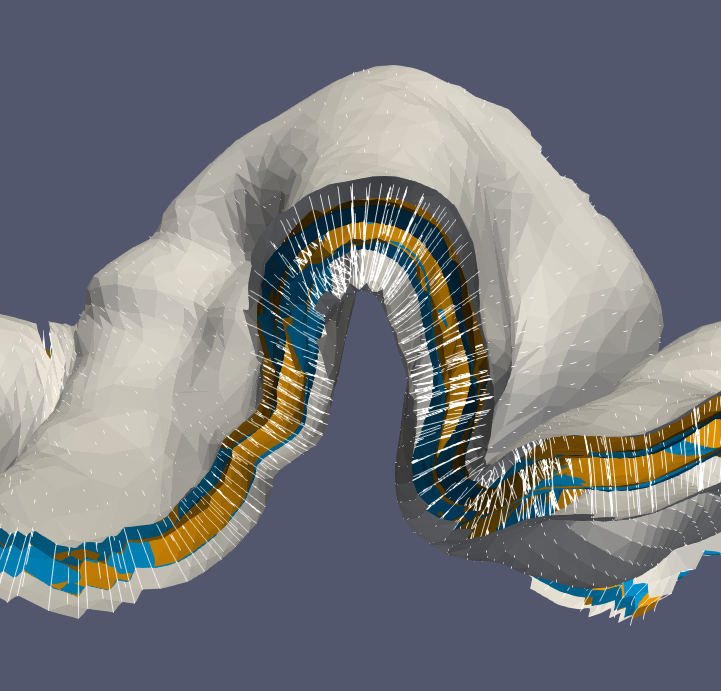Intestivating Properties of Cortical Surfaces Via Normal and Equivolumetric 3D Coordinates

Abstract taken from my talk at Computational Medicine Night. Wednesday, March 24, 2021
In 1929, Bok published the observation that folding in the cortical ribbon, composed of layers, in the brain seems to adjust layer thickness in order to preserve layer-specific volume. Image-based methods have modeled this equivolumetric principle. However, there is no unique solution to the arrangement of these layers. This causes different implementations to result in different layering schemes. Furthermore, many of such analyses compare these methods against 2D histological sections. Advanced neuroimaging datasets, such as the BigBrain, have allowed high resolution 3D surfaces and layer segmentations to be generated across the entire brain. This allows for verification in 3D against such cortical layer segmentations. Here, we build upon the method by Ratnanather et al. which utilizes diffeomorphic evolution in 3D from the gray/white matter interface to the pial surface while enforcing the equivolumetric constraint. Additionally, normal lines are developed orthogonally to the white matter surface to mimic cortical columns resulting from embryonic neuron growth. We seek to verify these theories on neurological development by incorporating these constraints and comparing against individual 3D layer segmentations using metrics robust to outliers in 3D space. Disruptions in cortical layer growth and folding are known as possible causes of some neurological disorders. Therefore, accurately estimating layers in cortical regions will provide a foundation for better understanding neurological development and disease.
More details to come later.
